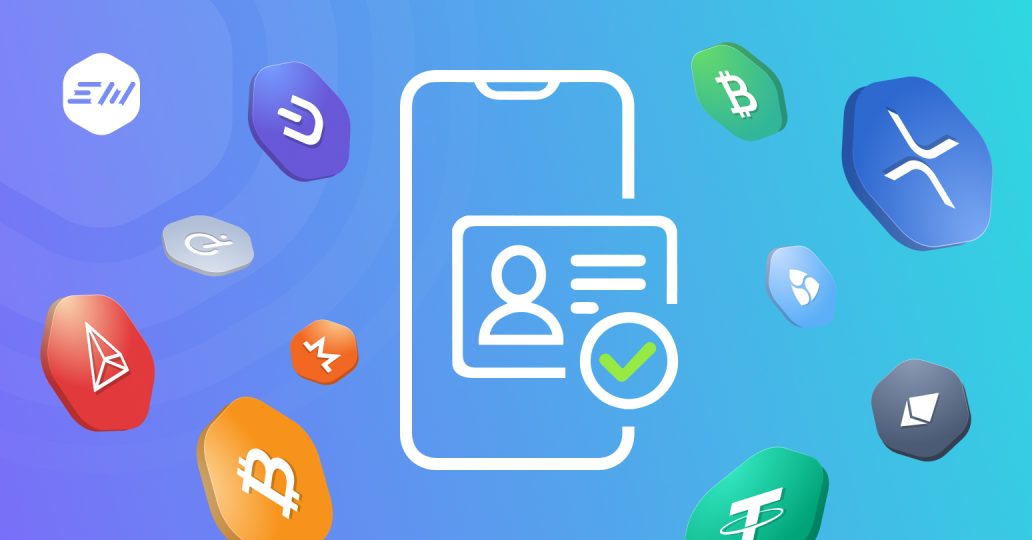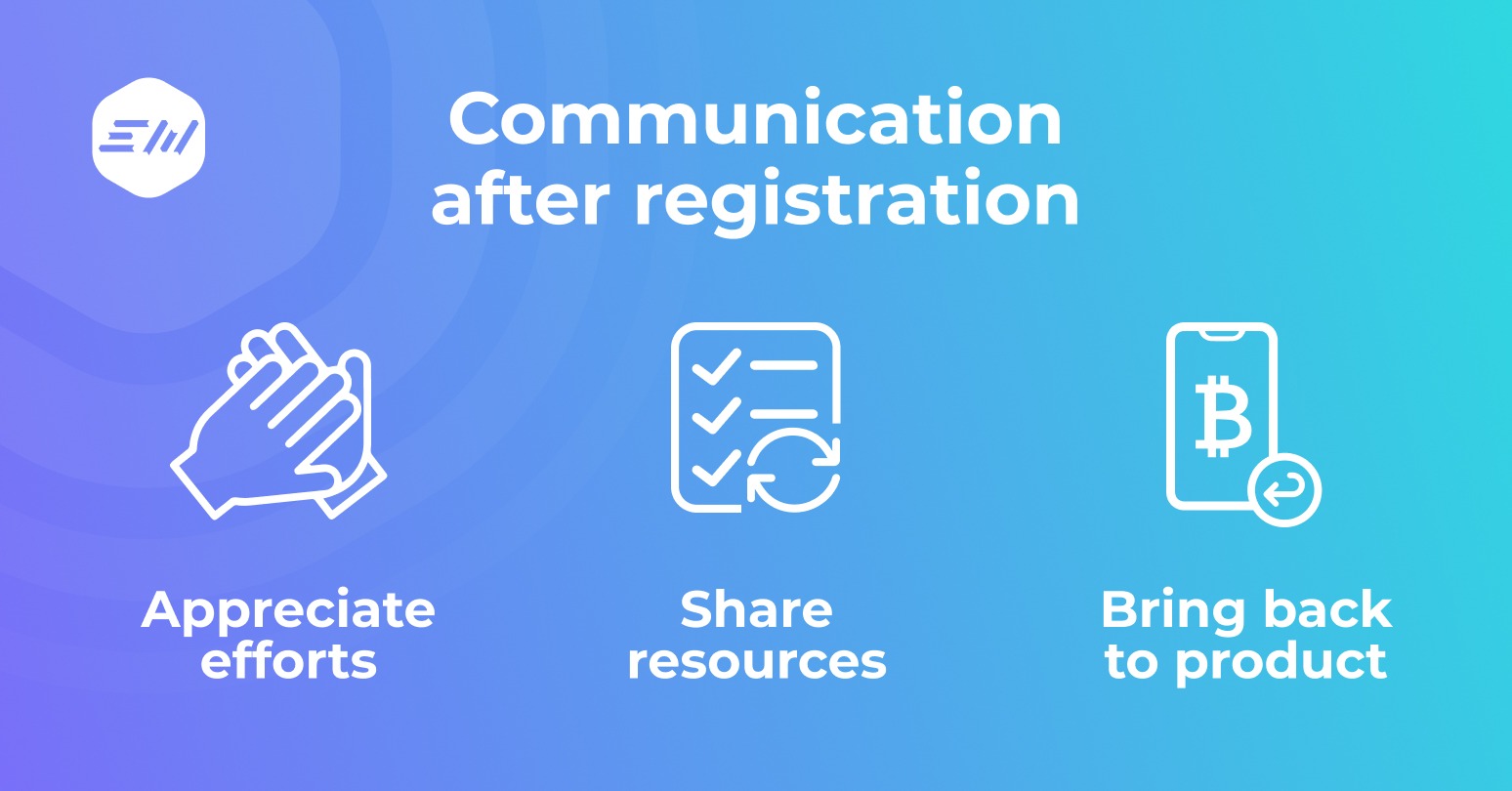 Back to Articles
Back to Articles
Building an onboarding process trusted by fintech users
Onboarding is an integral part of any successful product or app. Discover the main features of the onboarding process in the fintech industry and learn how to establish effective communication with a customer.

Why is onboarding so important
The customer onboarding process is one of the most important stages of the customer lifecycle. It sets the tone for future relationships between the product and the company, while also exerting a great amount of influence on whether a customer continues to use the product during the long term and becomes a regular customer.
The onboarding process is an integral step in the interaction between the customer and the product. At this stage, new users set up their accounts and start using the product as conveniently as possible. Onboarding covers the entire user journey: from initial sign-up to product activation and first use.
The best way to build trust with users is to be as transparent as possible and make them feel secure. This can be achieved by explaining each step of the onboarding process along with the importance of information, at each stage of onboarding.
Onboarding in fintech
According to research undertaken by McKinsey, only 27% of US-based users trust fintech services. However, the onboarding process plays a vital role in gaining the trust of users in financial products.
Onboarding is an integral part of financial service security, which consists of several elements. Ideal onboarding is organic and invisible to the customer. However, it is of vital importance to demonstrate that users and their assets are protected at every stage of onboarding. This starts with basic authentication and authorisation protocols such as biometrics and two-factor authentication. You can also explain why data encryption is important for protecting sensitive information.
The Know Your Customer (KYC) stage is the most critical aspect here. It includes various methods to verify the identity of users and is a key component in fighting money laundering and ensuring that the personal data of users are protected from fraud.
It is also extremely important to leave no stone unturned and keep the customer’s goals in focus, optimise the process so that the value of the product is demonstrated the first time it is used. This has a positive impact on profitability and reduces the risk of customer churn.
However, the onboarding process should not be too time-consuming or complicated resulting in users losing interest and making them abandon the product, no matter how good it is. The main point here is to minimise the effort required by the user to start using the product.
Also, avoid collecting excessive information because this can become a constant source of irritation for users. The key goal of this process is only to ask for information that is essential at the moment. The time users spend filling out a form should be worth the benefit they receive.
First impressions make all the difference, especially in the competitive fintech environment. It takes more than an innovative idea and a visually stunning app to stand out from the crowd. The user needs to be engaged and gain trust within the first few minutes while the value of the product is demonstrated.
There are several approaches that help improve the registration process:
- Short registration process to make it as easy as possible for the customer to start using the product quickly. First, only request data necessary to set up and use the product. All additional information should be requested later, only when required.
- Nevertheless, if a lot of data is required from the customer during the registration process, then it is better to divide the process into several pages. Requesting registration information on several pages correlates with increased conversion rates. Always offer users the opportunity to resume registration later without starting from scratch.
- Let users see the progress of their onboarding. This helps manage expectations for the duration of the process and also gives them the psychological boost to complete the registration scenario.
- Say thank you. Customers take the time to subscribe to a product and it is important for them to know that they are appreciated.
- Share resources to help them get started. This could be a video overview of the product, links to various help centre articles and frequently asked questions about the product.
- Encourage the customer to return to the product. While sharing additional resources is helpful, the main purpose of a welcome email is to motivate a new customer to sign in.
- Each message should be useful and help customers achieve their product goals while encouraging them to sign in.
- Messages should be short and to the point. They should draw attention to a particular function or scenario and be as clear as possible.
- Existing loyalty programs providing additional benefits to the client must be communicated via all channels.
- Communication can be enhanced with visuals – the smart use of images and animations can help make onboarding more vivid, engaging and interesting.
- Gamification is also a great strategy for making the onboarding process more fun. This can be enhanced by including game mechanics such as rewards and stickers.
- You can also add customer quotes or case study links to onboarding procedures. These will remind the customer of the product’s value.
- Churn rate – the number of customers who leave each month. It includes customers who have stopped using the product for any reason. Ideally, as onboarding improves, this rate should decrease in proportion to the number of users who have been retained.
- Lifetime value of the customer – an indicator that allows you to calculate the profit that a company receives over the entire period of their relationship with the customer. One of the factors that can increase the lifetime value is the duration of user sessions.
- Customer retention rate – this indicator not only analyses the number of customers but also allows you to understand the reasons why they have stopped using the product. For example, if users leave en masse during the first days after registration, then there is a lack of information.
- Net promoter score – the indicator can be calculated by asking customers: “How likely is it that you will recommend our service to your friends? Rate from 1 to 10”. The number of positive responses here is influenced by the user service experience and especially by first impressions.
Creating an account is the first stage of the onboarding process, after which communication with customers continues. After successful registration, it is important to send a user a welcome email in which:

Customer contact
Immediately after sending a welcome email, you need to establish unobtrusive communication with the customer, laying the basis for retention. The best way to do this is to diversify communication channels. In a welcome email confirming the registration, offer options of various communication channels: email, private messages, messengers, push notifications, etc. At the same time, you should regularly measure the activity and the level of conversions for each channel so that you can determine channel priority.
Communication tips:
Metrics
If the product caters to different users, customising the onboarding process is a great solution. By adjusting onboarding for each user segment, companies can attract new users more effectively, as well as lay the foundation needed to retain them. Onboarding customisation always has a positive effect on registration results.
It is also necessary to monitor how the customer interacts with the onboarding process and improve this process on an ongoing basis. The following metrics can be used for this purpose:
Conclusion
The key to effective onboarding is simplicity, ease and user-friendliness. The fewer people there are that ask “why?” or “how?” during the onboarding process, the more likely they are to finish it.
When it comes to fintech services, onboarding plays such an important role that you simply can’t afford to link several pages and be done with it. Instead, you really need to think over the effective customer onboarding process and integrate it into the app experience effectively.
This is a challenging task, in addition to the many challenges fintech developers are already facing. But, try to offer your best to make your onboarding intuitive and engaging, and you will definitely benefit from satisfied users and long-term collaborations.